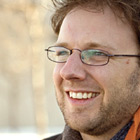From the editor: Asian particle physics
 |
Asian particle and accelerator physics has always been strong but hasn't always received the attention it warrants in the United States. Collaboration between Asian countries and the United States is increasing and many new programs and facilities will build more partnerships.
This issue of symmetry provides a sampler of Asian particle physics, with geographic scope defined by membership of the Asian Committee for Future Accelerators (ACFA). There is so much exciting and interesting work in the region that we can only touch on a few topics in this issue. We shall return to more of them in the future, just as we shall explore more topics from other parts of the world. Understanding the possibilities for particle physics in the United States requires knowledge of the international scene: US priorities are now being set with the international context firmly in mind.
ACFA, which recently celebrated its tenth anniversary, is playing an important role in helping bring together its member countries to advance a common interest. Members desire increased collaboration with foreign countries, as an aid to building stronger domestic science bases. This balance between the international and the domestic is particularly significant in developing nations, many of which see science as a tool for achieving their development aims.
Collaboration is one way for poorer countries to participate in science without needing to create blockbuster projects at home, and can be a stepping stone to strengthening domestic science. The vast pool of untapped talent in Asian-region countries will ultimately benefit the global scientific enterprise, but it needs help to grow.
The total population of ACFA members is more than half the world's population, while the United States and European Union combined make up 12 percent. Richer countries recognize the potential of this population. Some forward-thinking scientists are actively seeking collaboration with these ACFA partners, joining in the world-class programs and pro-viding assistance to the developing nations' scientists and science programs.
The future of US particle physics is tied to that of the rest of the world. From the growth of the field in the Asian region, we anticipate exciting progress for all of particle physics.
David Harris
Editor-in-Chief
Click here to download the pdf version of this article.


